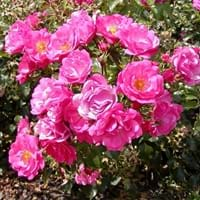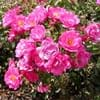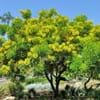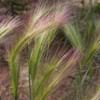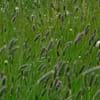Life Span
Perennial
Perennial
Type
Flowering Plants, Houseplant, Shrub
Grass
Origin
Asia, Europe, North America
Southeastern Asia, China, Japan
Types
Hulthemia, Banksianae, Pimpinellifoliae
Bigleaf hydrangea, Hortensia, Smooth hydrangea, Oakleaf hydrangea, Annabelle
Number of Varieties
Not Available
Habitat
gardens
Forest edges, Hillside, Woods
USDA Hardiness Zone
3-10
Not Available
AHS Heat Zone
Not Available
12*6
Sunset Zone
Not Available
7, 8, 9, 10, 12, 13, 14, 15, 16, 17, 18, 19, 20, 21, 22, 23, 24
Habit
Upright/Erect
Mat-forming
Flower Color
Hot Pink, Light Pink, Orange, Red, White, Yellow
Blue, Dark Purple, Light Purple, Red, White
Flower Color Modifier
Not Available
Bicolor
Fruit Color
Not Available
Not Available
Leaf Color in Spring
Dark Green
Green
Leaf Color in Summer
Dark Green
Light Green
Leaf Color in Fall
Dark Green
Green, Yellow green
Leaf Color in Winter
Dark Green
Green, Light Yellow, Tan
Leaf Shape
Pinnate
Oblovate
Plant Season
Late Summer, Mid Summer, Summer
Spring, Summer, Fall, Winter
Sunlight
Full Sun, Partial Sun
Full Sun, Partial Sun
Type of Soil
Clay, Loam, Sandy
Clay, Loam, Sand
The pH of Soil
Neutral, Slightly Acidic, Slightly Alkaline
Acidic, Neutral, Alkaline
Soil Drainage
Well drained
Well drained
Bloom Time
Late Summer, Mid Summer, Summer
Not Available
Where to Plant?
Ground, Pot
Container, Ground
How to Plant?
Seedlings, Stem Planting
Seedlings, Stem Planting
Plant Maintenance
Medium
Medium
Watering Requirements
Requires a lot of watering, Requires regular watering
Not Available
In Summer
Lots of watering
Average Water
In Spring
Moderate
Moderate
In Winter
Average Water
Average Water
Soil pH
Neutral, Slightly Acidic, Slightly Alkaline
Not Available
Soil Type
Clay, Loam, Sand
Not Available
Soil Drainage Capacity
Well drained
Not Available
Sun Exposure
Full Sun, Partial Sun
Not Available
Pruning
cut main flower spike, Prune in spring, Remove dead leaves, Remove deadheads
Remove damaged leaves, Remove dead branches, Remove dead leaves
Fertilizers
5-10-10 fertilizer
All-Purpose Liquid Fertilizer
Pests and Diseases
Aphids, Black Spot, Japanese Beetles, Powdery mildew, Spider mites
Red blotch
Plant Tolerance
Wet Site
Salt
Flowers
Yes
Insignificant
Flower Petal Number
Double
Single
Foliage Texture
Not Available
Fine
Foliage Sheen
Matte
Not Available
Evergreen
No
Semi-Evergreen
Invasive
Yes
Not Available
Self-Sowing
No
Not Available
Attracts
Bugs
Bees, Flies
Allergy
Asthma, contact allergic dermatitis, Rhinoconjunctivitis
Chest tightness, Diarrhea, Dizziness, Nausea, Vomiting
Aesthetic Uses
Borders, Bouquets, Showy Purposes
Not Available
Beauty Benefits
good for lips, Improve skin tone, Moisturizing, Speed hair growth
Not Available
Edible Uses
Yes
Not Available
Environmental Uses
Air purification
Air purification
Medicinal Uses
anti-inflammatory, Antiseptic, Asthma, Dehydration, Dermatitis, Eczema, Eye Problems, Fatigue, Gallbladder Diseases, Liver problems, Sore throat, Stomach aliments, Swelling, Ulcers, Urinary tract problems
Fever, Kidney problems, Urinary tract problems
Part of Plant Used
Flowers
Flowers, Root
Other Uses
Can be made into a herbal tea, Cosmetics, Culinary use, Edible syrup, Making Sweet Scented Oil, Oil is used for aromatherapy, Used as essential oil, Used as Ornamental plant, Used for fragrance, Used for its medicinal properties
Not Available
Used As Indoor Plant
Yes
Not Available
Used As Outdoor Plant
Yes
Yes
Garden Design
Bedding Plant, Mixed Border
Not Available
Botanical Name
Rosa rubiginosa
ZOYSIA japonica
Common Name
Rose
Japanese Lawn Grass, Korean Lawn Grass, Zoysia Grass
In French
Se leva
Hortensia
In Spanish
Rosa
Hortensia
In Greek
Τριαντάφυλλο
υδραγεία
In Portuguese
Rosa
Hortênsia
Phylum
Magnoliophyta
Not Available
Class
Magnoliopsida
Not Available
Order
Rosales
Not Available
Family
Rosaceae
Not Available
Clade
Angiosperms, Eudicots, Rosids
Not Available
Tribe
Not Available
Not Available
Subfamily
Rosoideae
Not Available
Number of Species
Not Available
Importance of Rose and Zoysia Grass
Want to have the most appropriate plant for your garden? You might want to know the importance of Rose and Zoysia Grass. Basically, these two plants vary in many aspects. Compare Rose and Zoysia Grass as they differ in many characteristics such as their life, care, benefits, facts, etc. Every gardener must at least have the slightest clue about the plants he wants to plant in his garden. Compare their benefits, which differ in many ways like facts and uses. The medicinal use of Rose is anti-inflammatory, Antiseptic, Asthma, Dehydration, Dermatitis, Eczema, Eye Problems, Fatigue, Gallbladder Diseases, Liver problems, Sore throat, Stomach aliments, Swelling, Ulcers and Urinary tract problems whereas of Zoysia Grass is Fever, Kidney problems and Urinary tract problems. Rose has beauty benefits as follows: good for lips, Improve skin tone, Moisturizing and Speed hair growth while Zoysia Grass has beauty benefits as follows: good for lips, Improve skin tone, Moisturizing and Speed hair growth.
Compare Facts of Rose vs Zoysia Grass
How to choose the best garden plant for your garden depending upon its facts? Here garden plant comparison will help you to solve this query. Compare the facts of Rose vs Zoysia Grass and know which one to choose. As garden plants have benefits and other uses, allergy is also a major drawback of plants for some people. Allergic reactions of Rose are Asthma, contact allergic dermatitis and Rhinoconjunctivitis whereas of Zoysia Grass have Chest tightness, Diarrhea, Dizziness, Nausea and Vomiting respectively. Having a fruit bearing plant in your garden can be a plus point of your garden. Rose has no showy fruits and Zoysia Grass has no showy fruits. Also Rose is flowering and Zoysia Grass is not flowering . You can compare Rose and Zoysia Grass facts and facts of other plants too.
